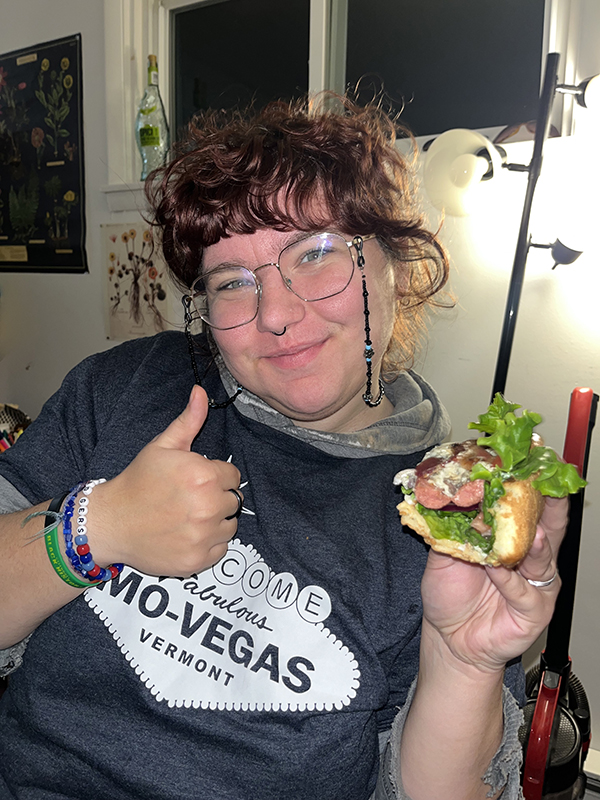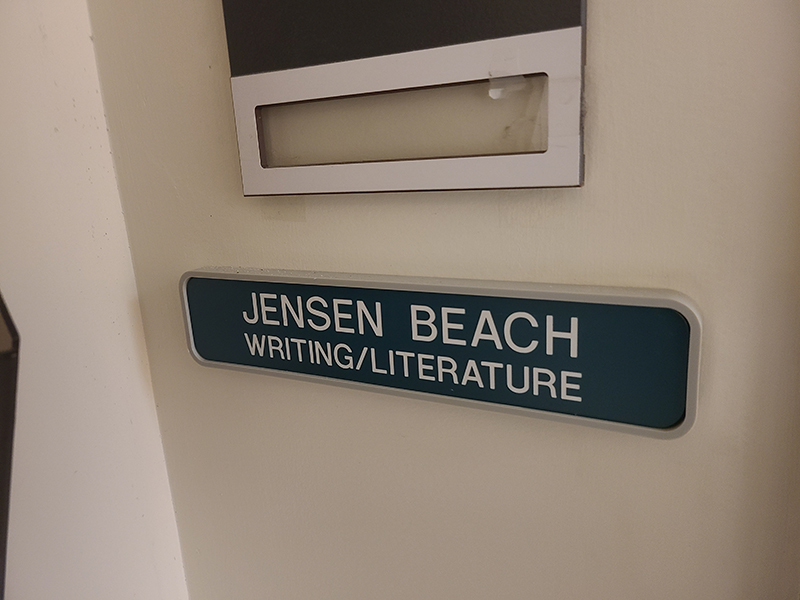Hurricane Sandy’s violent winds rush across the screen in the MARS Lab. The website projected on the screen shows wind direction and speed across America.
The website says it’s 2:59. It’s actually 4:00. Assistant Professor of Fine Arts Sean Clute steps away from his animation class to refresh the page.
“LOADING,” the page says. “LOADING.”
Clute looks at me.
“How appropriate is that?” he says.
Clute has designed JSC’s newest major, Media Arts – which has been “loading” since last spring.
Media Arts opens next semester. It’s a 60-credit B.F.A. program, including courses on “image processing, animation and motion graphics, video and new media.”
“I think it’s clear that digital literacy is becoming just as important as being able to read, being able to write, and being able to do mathematics,” Clute said. “That’s exactly what this program is designed to do. It’s designed to educate students and have them become digitally literate. It’s also becoming obvious to me that there’s no job sector or otherwise that’s not going to use some form of digital media. This program is vital to give students the opportunity to become equipped with digital literacy before they leave Johnson State College.”
Professor of Fine Arts Ken Leslie, the department co-chair, and President Barbara Murphy contacted Clute last spring.
“They said, ‘We really need a media arts program,’” Clute said. He wrote a draft of the potential major, which the Vermont State Colleges Board of Trustees approved over the summer.
Leslie has been helping Clute shape the program.
The program’s official description says that it explores “the expanding world of media with an emphasis on creative inquiry and artistic collaboration, and adaption to emerging technologies.”
“All the pieces are falling into place on this campus,” Clute said. “Now you have the MARS Lab, which has been running for two years. You have the mini-MARS Lab, which is up in the [Visual Arts Center]. You have the Black Box experimental theater, which is in the VAC. In the music department, you have a MIDI lab. You have all of these different resources now. Now that we have all these different resources, a degree like this is possible.”
Clute said that Media Arts is not solely a graphic design degree.
“There’s been a lot of rumors about a graphic design degree at this college,” he said. “I get a lot of students that come in and say, ‘How do I be part of the graphic design degree?’ The reality is that there still is no such thing. The B.F.A. is different from just the art of graphic design.”
Graphic design is included in the major, but the Media Arts major also includes time-based media, new media and image processing. Clute said this makes the program unique to the area.
“There are very few [Media Arts] programs in Vermont,” he said. “For example, Lyndon [State College] has a graphic design and illustration major, but it’s very different than our media arts major. Ours isn’t specialized in one thing: it’s encompassing many different practices.”
But those interested in graphic design should still consider the Media Arts program.
“A lot of students here I encounter aren’t aware of all the possibilities of media arts,” Clute said. “My feeling is that they think graphic design is the pre-eminent avenue of studying this type of media arts, when in fact there are so many more types of fields.”
Clute hopes to add more than just arts classes to the program.
“What we’re still in the process of doing is designing this to be a more interdisciplinary program,” he said. “That’s one of the forward-thinking things in our mind. How do we integrate the idea of math and media? Jan [Herder] has been really into 3D environments and 3D virtual worlds, how do we integrate that into these courses too?”
Herder is teaching a course on 3D virtual identities next fall.
“The essence of all this stuff, all this media, is mathematics,” Clute said. “Mathematics and technology.”
More student interest and enrollment will give the Fine Arts department “more weight and ability to expand the program. I think the nature of new media is one that has to expand. To me, as a professor and an artist, that’s what’s so exciting about media. That possibility about the newness of the art forms.”
Clute said he would love to involve students in expanding the program.
The Media Arts major may also increase the number of visiting artists at JSC.
Clute wants to have a series of visiting artists that is more “long-term and extensive” than the current sporadic artist visits. Clute hopes a visiting artist series can tie into the degree on a more official basis.
“Now that we’ve had a couple guest artists here, and it’s been proven to be successful, the next step will be to approach the college for more funding or opportunity,” he said.
Required courses are the same for all B.F.A. students. “That offers some flexibility for students who may have started in a fine art program, [but] aren’t sure if they want to do the fine art or specializing in media arts,” Clute said. “They can make that determination later on.”
Students applying for the B.F.A. in Media Arts program have to plan how they will complete the B.F.A. program with their advisor, then submit an application including a work portfolio, a one-page artist’s statement, a copy of their transcript, a copy of their study plan and a B.F.A. application form, which is available in the Visual Arts Center office.
The next B.F.A. review, in which members of the Fine Arts department review the applications, will be Tuesday, Dec. 13. Applications have to be submitted by 3:00 p.m.
Students looking for more information on the program should contact their advisor or Sean Clute.



